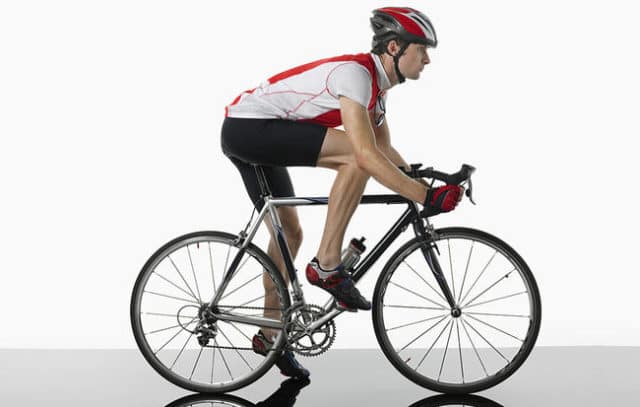Your spine should always be in a neutral position on the bike. What does this mean, exactly? As Bates puts it, you want your spine to look the same on the bike as it does off of it—maintaining its natural “S” curve. Try to refrain from riding with an arched or rounded back for long periods of time. A quick stretch can feel good on a long ride, but keep things neutral for the majority of your miles.
“The ideal hip angle is when a rider is riding within their body’s range of motion—there they will be the most comfortable, more powerful and efficient, and less prone to injury,” says Bates. Most weekend warriors ride with a hip angle of around 110 degrees, she says, and that anything less than 100 degrees would indicate limited hip flexibility.
Riding in a position that is too upright (i.e. when the angle made by your hips and your torso is more than 110) can cause problems with the lumbar spine, soft tissue pain at the saddle, and pressure in the hands. Riding in a position that’s more aero than your body can handle—remember, we’re not all pros with our own staff dedicated to keeping us performing at our best—can cause pain in the shoulders, neck, hands, spine, knees, and pelvis.
Unless you’re descending a gnarly, technical turn in the drops, make sure you’re keeping a light touch on your handlebars. “White knuckling creates a lot more tension in the muscles, causing them to fatigue quicker. Plus, it’s just not fun!” Bates says. That very same tension can creep through the rest of your body and create fatigue earlier on in your ride.
A key indication that your saddle is the right height is how much your hips rock when you ride. If your saddle is too high, you’ll have to reach for the pedals and your hips will rock up and down, which, according to Bates, can cause pain in the lumbar, thoracic, or cervical spine; knee and foot pain; and even saddle sores. Get a friend to watch your hips from behind—the movement should be minimal.


